03卷积神经网络--入门小案例
01 卷积神经网络理论
注:参考吴恩达老师的课件和下面链接的笔记
参考:https://blog.csdn.net/weixin_36815313/article/details/105731373
1. 卷积运算是卷积神经网络最基本的组成部分,使用边缘检测作为入门样例。
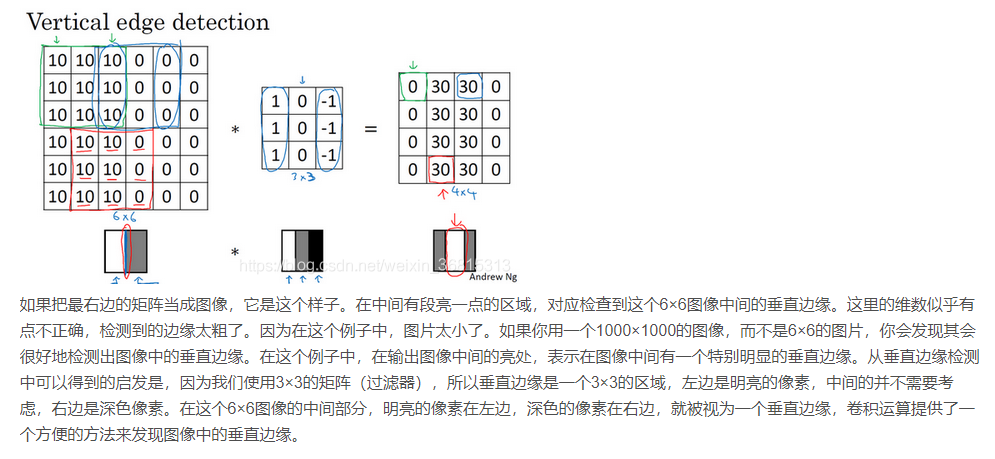
2.为了构建深度神经网络,你需要学会使用的一个基本的卷积操作就是padding,让我们来看看它是如何工作的。
如果我们有一个n∗n的图像,用 f∗f的过滤器做卷积,那么输出的维度就是(n−f +1)∗(n−f+1)。

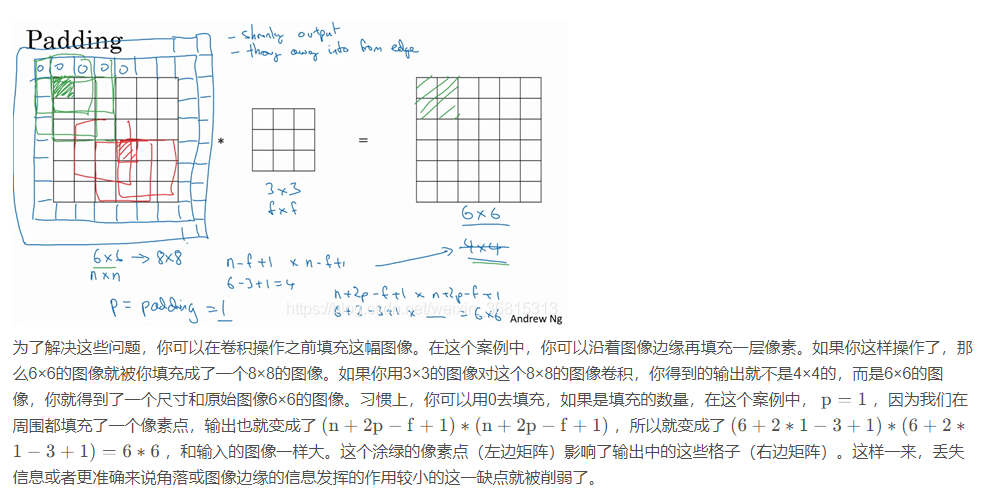

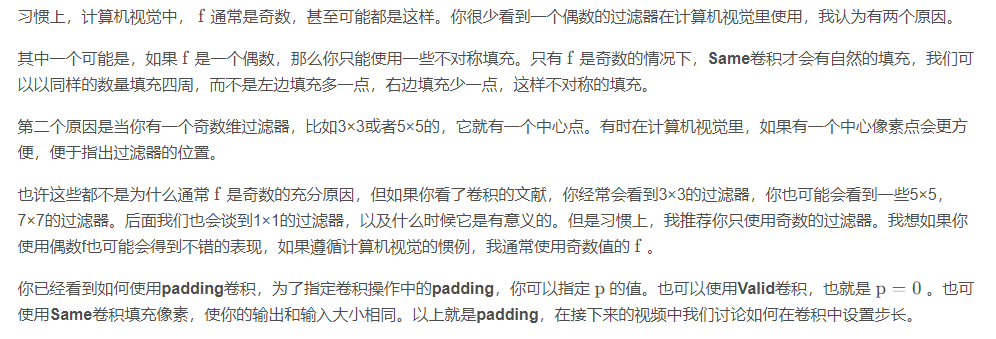
3. 卷积步长
卷积中的步幅是另一个构建卷积神经网络的基本操作。
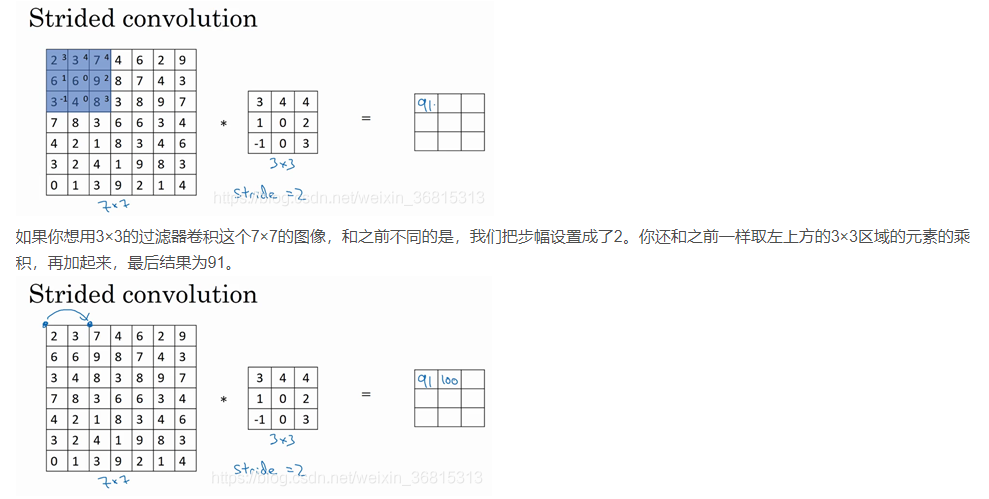
如果你用一个f∗f的过滤器卷积一个n∗n的图像,你的padding为p,步幅为s ,因为现在你不是一次移动一个步子,而是一次移动s个步子,输出于是变为 \(\frac{n+2p-f}{s}+1 *\frac{n+2p-f}{s}+1\)。
现在只剩下最后的一个细节了,如果商不是一个整数怎么办?在这种情况下,我们向下取整。
4.三维卷积
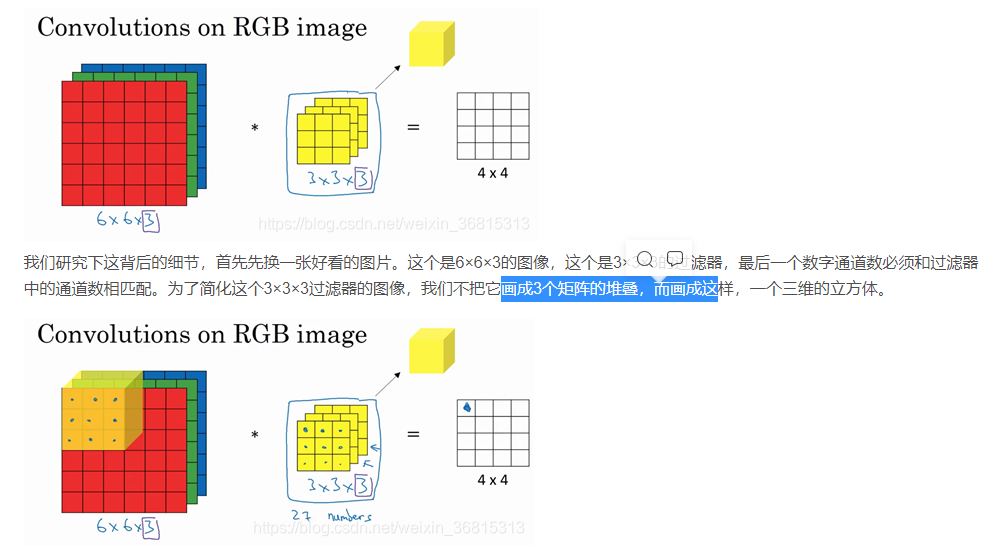
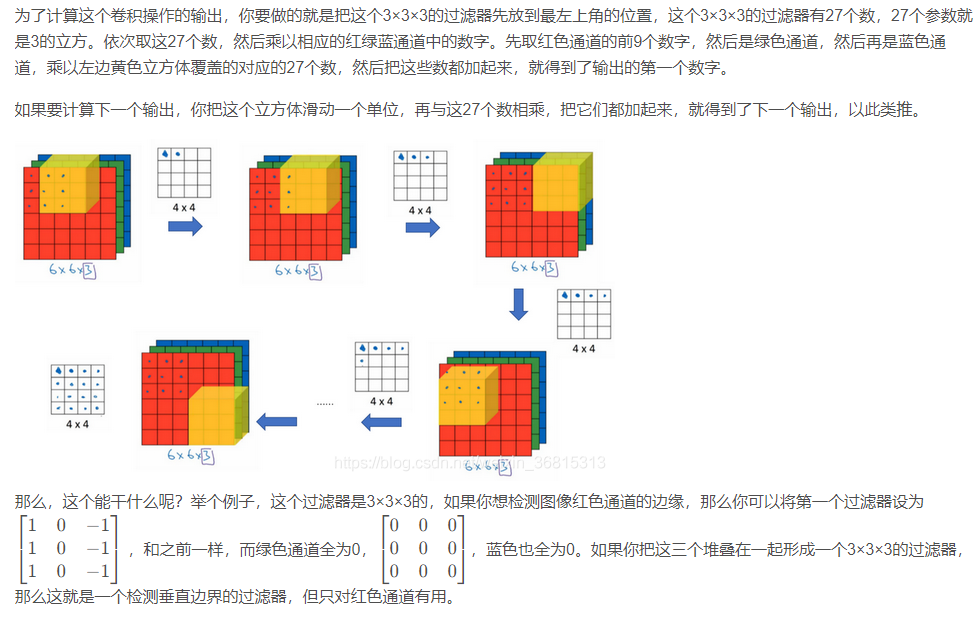
再注意一下这个卷积立方体,一个6×6×6的输入图像卷积上一个3×3×3的过滤器,得到一个4×4的二维输出(三个通道卷积出来的结果相加)。
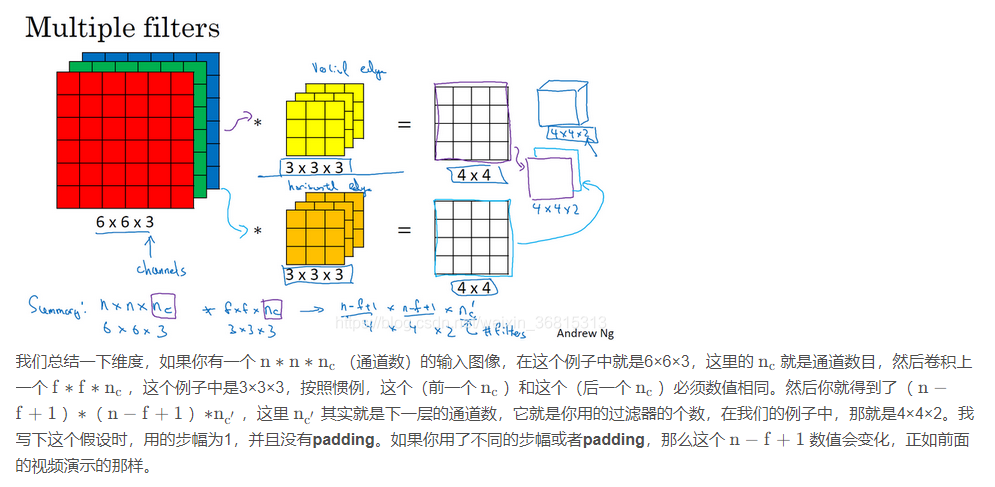
5. 单层卷积网络 (One Layer of a Convolutional Network)
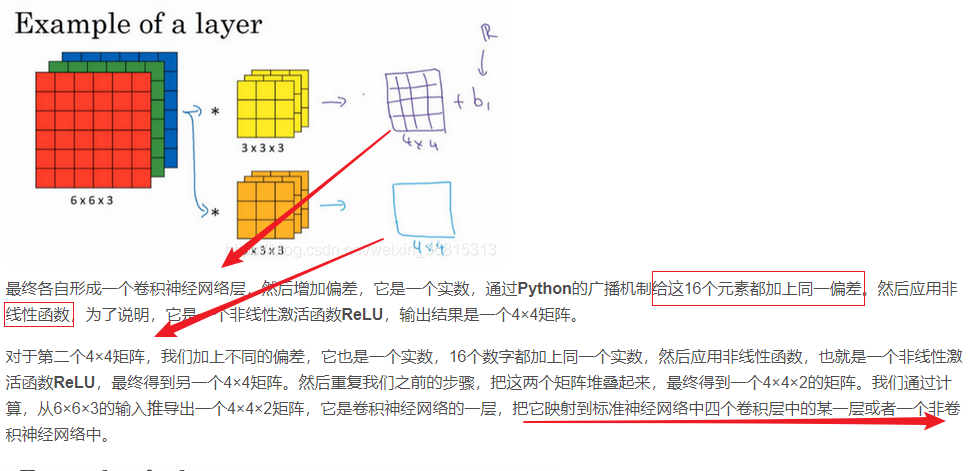
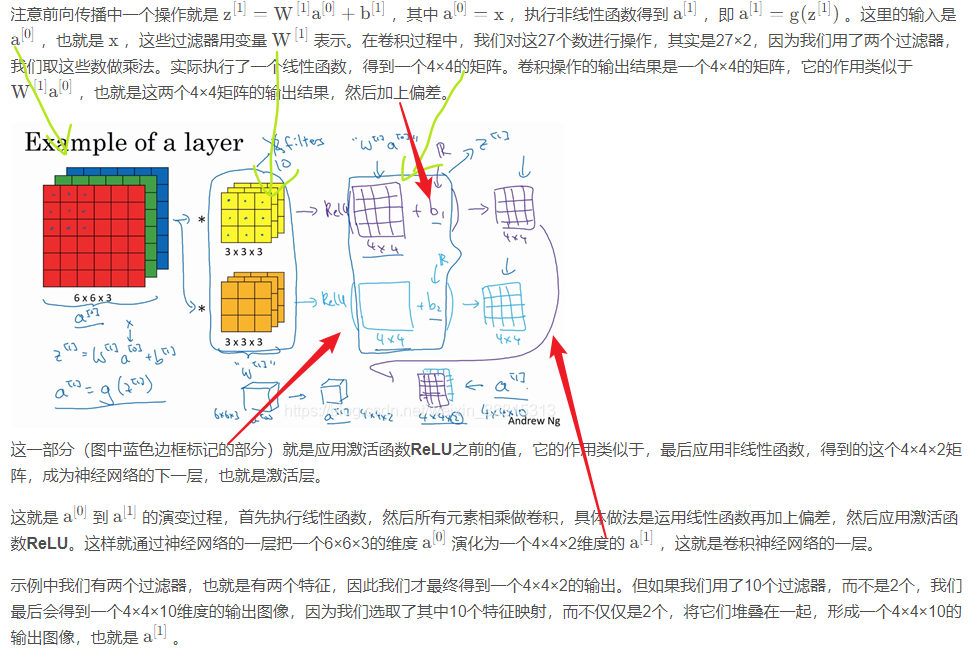
6.池化层 (Pooling Layers)
除了卷积层,卷积网络也经常使用池化层来缩减模型的大小,提高计算速度,同时提高所提取特征的鲁棒性,我们来看一下。
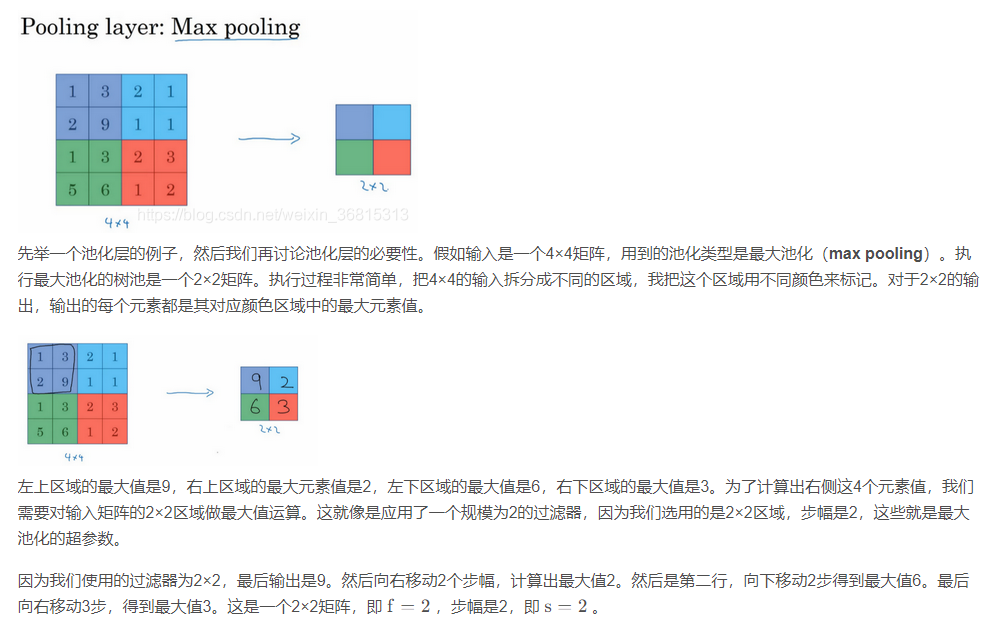
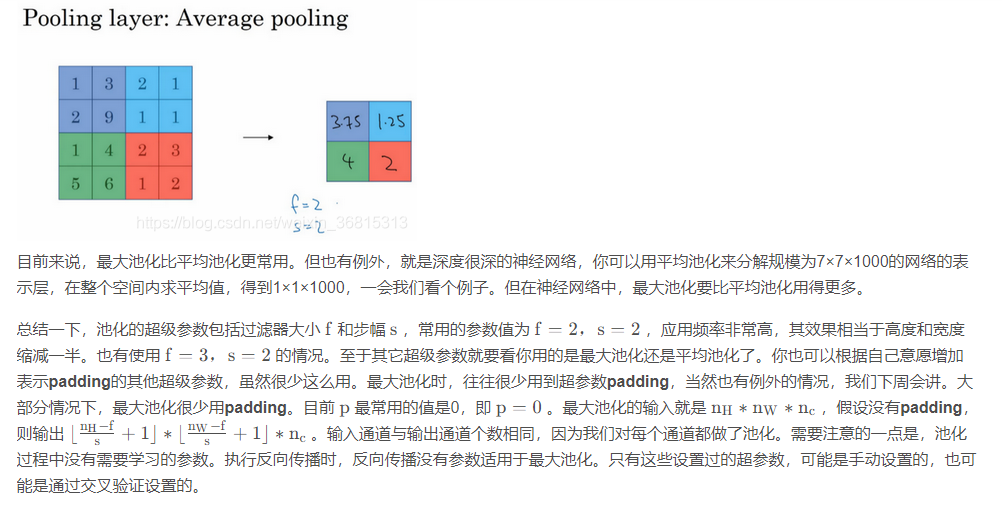
7.为什么使用卷积 (Why Convolutions?)
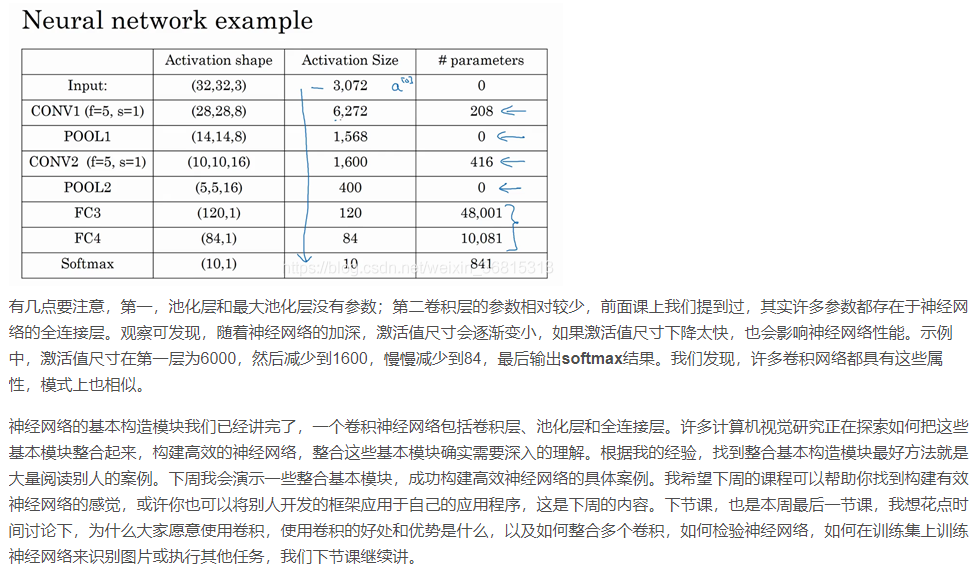
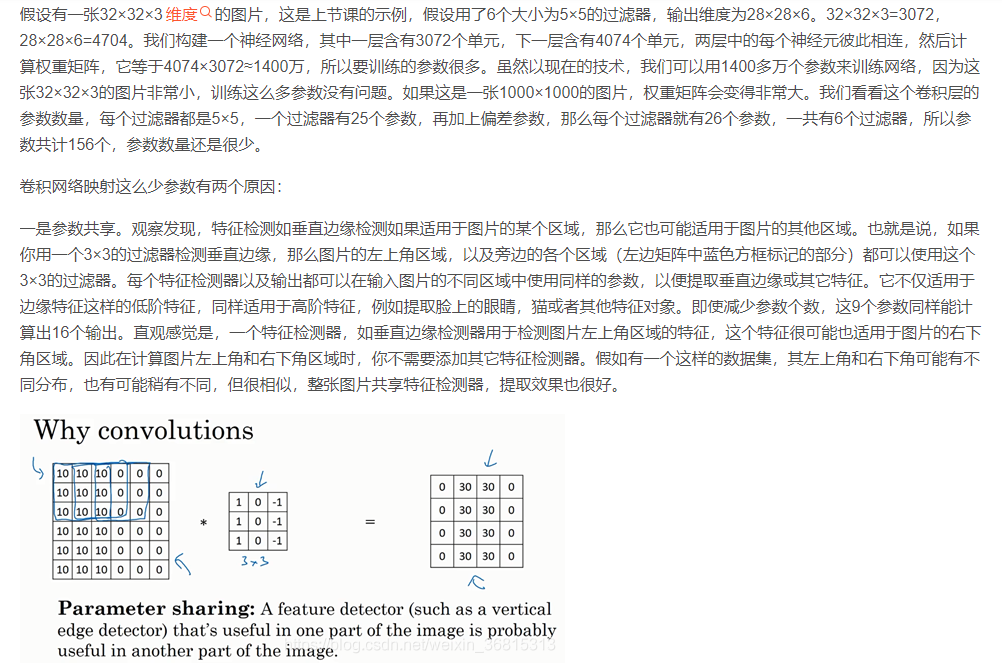
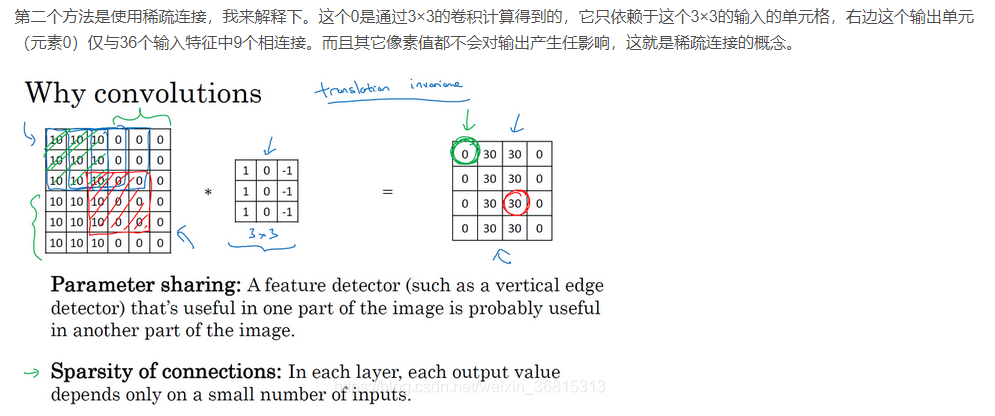
02 pytorch实战
01 任务

这是一个简单的前馈神经网络,它接收输入,让输入一个接着一个的通过一些层,最后给出输出。
一个典型的神经网络训练过程包括以下几点:
1.定义一个包含可训练参数的神经网络
2.迭代整个输入
3.通过神经网络处理输入
4.计算损失(loss)
5.反向传播梯度到神经网络的参数
6.更新网络的参数,典型的用一个简单的更新方法:weight = weight - learning_rate *gradient
import torch
import torch.nn as nn
import torch.nn.functional as f
class Net(nn.Module):
def init(self):
super().init()
# 1 input image channel, 6 output channels, 5x5 square convolution
# kerne
# 1,1,32,32
self.conv1 = nn.Conv2d(1, 6, 5)
# 1,6,28,28
# 1,6,14,14
self.conv2 = nn.Conv2d(6, 16, 5)
# 16,24,24
# an addine opration: y=wx+b
self.fc1 = nn.Linear(16 * 5 * 5, 120)
self.fc2 = nn.Linear(120, 84)
self.fc3 = nn.Linear(84, 10)
def forward(self, x):
# Max pooling over a (2, 2) window
x = f.relu(self.conv1(x))
x = f.max_pool2d(x, (2, 2))
# If the size is a square you can only specify a single numbe
x = f.max_pool2d(f.relu(self.conv2(x)), 2)
x = x.view(-1,len(x.flatten()))
x = f.relu(self.fc1(x))
x = f.relu(self.fc2(x))
x = self.fc3(x)
return x
if name == 'main':
net = Net()
a = torch.randn(1, 1, 32, 32)
out = net(a)
print(out)
# tensor([[ 0.0361, 0.0082, -0.0659, 0.0686, -0.1300, 0.0308, -0.0280, 0.0833,
# 0.1442, -0.0974]], grad_fn=
print(net)
# Net(
# (conv1): Conv2d(1, 6, kernel_size=(5, 5), stride=(1, 1))
# (conv2): Conv2d(6, 16, kernel_size=(5, 5), stride=(1, 1))
# (fc1): Linear(in_features=400, out_features=120, bias=True)
# (fc2): Linear(in_features=120, out_features=84, bias=True)
# (fc3): Linear(in_features=84, out_features=10, bias=True)
# )
params = net.parameters()
for i in params:
print(i.shape)
# torch.Size([6, 1, 5, 5])
# torch.Size([6])
# torch.Size([16, 6, 5, 5])
# torch.Size([16])
# torch.Size([120, 400])
# torch.Size([120])
# torch.Size([84, 120])
# torch.Size([84])
# torch.Size([10, 84])
# torch.Size([10])
import torch
import torch.nn as nn
import torch.optim as optim
import torch.nn.functional as f
torch.manual_seed(10)
class Net(nn.Module):
def __init__(self):
super().__init__()
# 1 input image channel, 6 output channels, 5x5 square convolution
# kerne
# 1,1,32,32
self.conv1 = nn.Conv2d(1, 6, 5)
# 1,6,28,28
# 1,6,14,14
self.conv2 = nn.Conv2d(6, 16, 5)
# 16,24,24
# an addine opration: y=wx+b
self.fc1 = nn.Linear(16 * 5 * 5, 120)
self.fc2 = nn.Linear(120, 84)
self.fc3 = nn.Linear(84, 10)
def forward(self, x):
# Max pooling over a (2, 2) window
x = f.relu(self.conv1(x))
x = f.max_pool2d(x, (2, 2))
# If the size is a square you can only specify a single numbe
x = f.max_pool2d(f.relu(self.conv2(x)), 2)
x = x.view(-1,len(x.flatten()))
x = f.relu(self.fc1(x))
x = f.relu(self.fc2(x))
x = self.fc3(x)
return x
if __name__ == '__main__':
net = Net()
a = torch.randn(1, 1, 32, 32)
target = torch.randn(10)
target = target.view(1, -1)
criterion = nn.MSELoss()
optimizer = optim.SGD(net.parameters(), lr=0.01)
for i in range(100):
optimizer.zero_grad()
out = net(a)
loss = criterion(out, target)
loss.backward()
optimizer.step()
print(loss)


 浙公网安备 33010602011771号
浙公网安备 33010602011771号